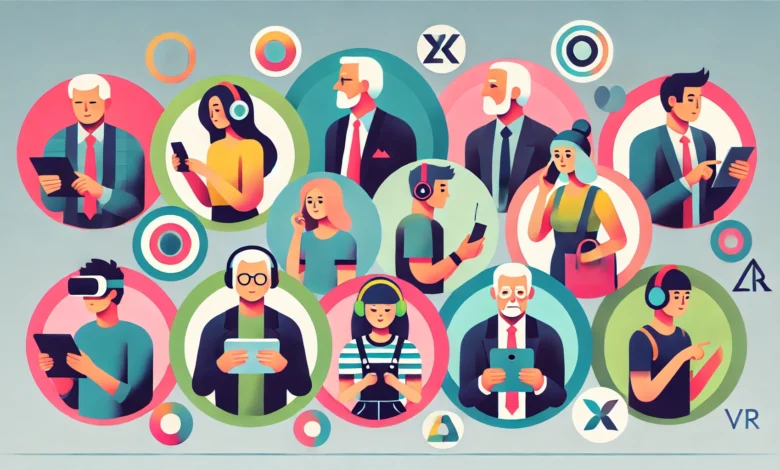Decoding the Digital DNA: A Comprehensive Guide to Marketing Across Generations

- What is Digital DNA?
- Understanding Digital DNA
- Decode the Digital DNA
- Cracking the Code of Generational Digital DNA
- Crossing the Generational Bridge
- Closing Thoughts
The digital landscape is constantly evolving, and with it, the way we consume content and interact with brands. Marketers need to be able to adapt to these changes to reach and engage their target audiences. One way to do this is to understand the digital DNA of each generation.
What is Digital DNA?
Digital DNA is the unique set of behaviors, attitudes, and preferences that define how each generation interacts with technology. It is influenced by factors such as the technology that they grew up with, the social media platforms they use, and the way they consume news and information.
Why is Understanding Digital DNA Important for Marketing?
Understanding digital DNA is important for marketing because it helps marketers to create content and experiences that are relevant and engaging to each generation. For example, Gen Z is more likely to use social media to research products and services, while Baby Boomers are more likely to rely on traditional forms of media, such as TV and newspapers.
How to Decode the Digital DNA of Each Generation

There are several ways to decode the digital DNA of each generation. Here are few tips:
– Research the key events and trends that have shaped each generation. This will give you a better understanding of their values and priorities.
– Look at the social media platforms that each generation uses. This will give you insights into how they consume content and interact with brands.
– Pay attention to the way each generation talks about brands. This will help you to understand what they value and what they are looking for in a brand.
Decoding the digital DNA of each generation is essential for marketers who want to reach and engage their target audiences. By understanding the unique preferences and behaviors of each generation, marketers can create content and experiences that are relevant and engaging.
Use multiple channels. Do not just focus on one platform or channel. Reach your target audience where they are, using a variety of channels.
Cracking the Code of Generational Digital DNA
Baby Boomers (Born 1946-1964)
Baby Boomers grew up in a world transitioning from analog to digital, yet many are active internet users today. They value trust, relationships, and reliability in brand messaging.
Preferred Platforms: Facebook, email newsletters.
Behavior: Boomers often research online before making purchases but prefer completing transactions in person or over the phone.
Marketing Tips:
- Use clear, easy-to-read fonts and simple navigation.
- Highlight trustworthiness through reviews and testimonials.
- Focus on practical benefits and long-term value.
Strategy snapshot: Develop an email marketing campaign that offers value, be it informative content or exclusive deals. Retargeting campaigns can also be gold, guiding Boomers back to abandoned shopping carts or unread newsletters.
Generation X (Born 1965-1980)
– Digital habits: Caught between the analog and digital worlds, Gen X is versatile. They are multi-device users and were the pioneers of online shopping.
– Preferred platforms: Facebook and YouTube hold sway. They also frequently check their emails and have begun networking on LinkedIn and express their thoughts on Twitter. Varies from one country to another.
– Key to engagement: A mix of information and entertainment. Gen X appreciates loyalty programs and online deals.
– Strategy snapshot: A mobile-optimized website is crucial. Consider video content that either educates or entertains, and sometimes both (Emphasize work-life balance solutions). Loyalty programs? Absolutely. Utilize email marketing for updates and personalized offers
Be consistent. Your messaging should be consistent across all channels and platforms. This will help to build trust and credibility with your audience.
Millennials (Born 1981-1996)
– Digital habits: Millennials, having witnessed the digital revolution firsthand, are constantly connected. Socializing, shopping, entertainment … it is all online.
– Preferred platforms: Instagram, Facebook, Snapchat, and Twitter. They are also the podcast generation.
– Key to engagement: Personalization. They want experiences tailored to them, authentic interactions, and brands with a voice.
– Strategy snapshot: User-generated content campaigns can be magic. Collaborate with influencers, but ensure the partnership feels genuine. Dive deep into data analytics to personalize ad experiences.
Generation Z (Born 1997-2012)
– Digital habits: Gen Z, the first true digital natives. For them the digital realm is not a separate world; it is an integral part of life. They are quick to adopt (and drop) new platforms. Gen Z borns thrive in a connected world. They expect seamless digital experiences and authenticity from brands.
– Preferred platforms: TikTok, Snapchat, Instagram Stories, and YouTube.
– Key to engagement: Speed and visuals. Content must be quick, engaging, and visual. They are also heavily into social causes and activism.
– Strategy snapshot: Short-video platforms are necessary. Ensure content is not just engaging but also visually rich. Associating with meaningful causes can foster deeper connections. Use platforms like TikTok for trend-driven campaigns. Reflect inclusivity and transparency in your messaging.
Be creative. Do not be afraid to try new things and experiment with different marketing strategies. The more creative you are, the more likely you are to stand out from the competition.
Generation Alpha (Born 2013–2024)
Generation Alpha is the youngest, growing up entirely in a tech-saturated environment. They are accustomed to voice assistants, smart devices, and instant gratification.
– Preferred Platforms: YouTube, educational apps, gaming platforms.
– Behavior: Although they are not decision-makers, their preferences influence family purchasing decisions.
Marketing Tips:
- Develop engaging, educational content.
- Partner with family-oriented influencers.
- Focus on gamified experiences and interactive apps.
Emerging Generation Beta (Born 2025–Present)
As Generation Beta begins to emerge, marketers must anticipate trends rooted in artificial intelligence, augmented reality, and sustainable practices. While much is yet to be defined, early trends suggest a future where hyper-personalization and immersive experiences will dominate.
– Potential Characteristics: Likely to be shaped by AI-driven tools, climate-conscious values, and wearable technology.
– Marketing Preparations:
- Invest in immersive technology.
- Monitor trends in sustainability and ethical branding.
- Plan for family-oriented and education-first marketing approaches.
Crossing the Generational Bridge
Despite their differences, some universals appeal across generations:
– Authenticity: From Boomers to Gen Z, every generation values authenticity. Real stories, transparent practices, and genuine interactions will always triumph.
– Mobile Optimization: With increasing mobile usage across the board, a mobile-first approach is non-negotiable.
– Personalization: Each generation wants to feel seen and understood. Harness the power of data analytics and AI to offer personalized experiences.

Closing Thoughts
The digital realm is vast and varied. While it is essential to recognize generational preferences, it is equally crucial to remain adaptable. Today’s favored platform could be tomorrow’s digital ghost town. Understand your audience but keep an eye on the horizon. The digital dance never stops; it merely changes tunes.
Be patient. It takes time to build relationships with each generation. Do not expect to see results overnight.
By following these tips, you can create marketing campaigns that resonate with each generation and help you to reach your target audience.
Marketing across generations can be a challenge, but it is also an opportunity. By understanding the unique needs and preferences of each generation, you can create marketing campaigns that resonate with them and help you to reach your target audience.
